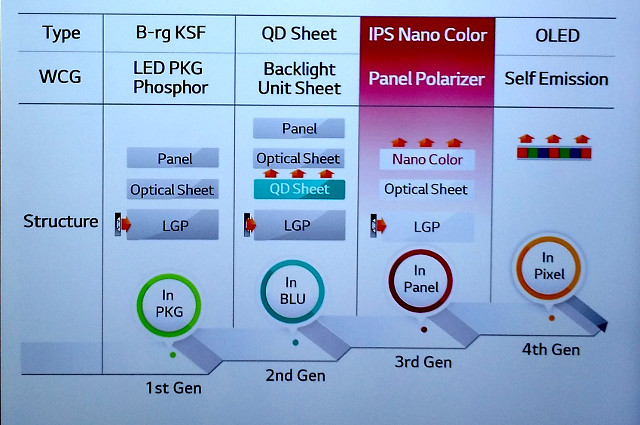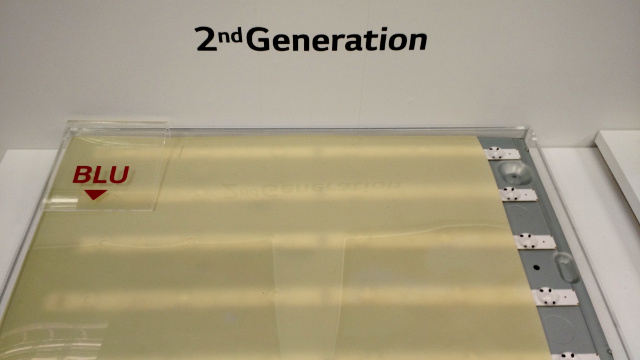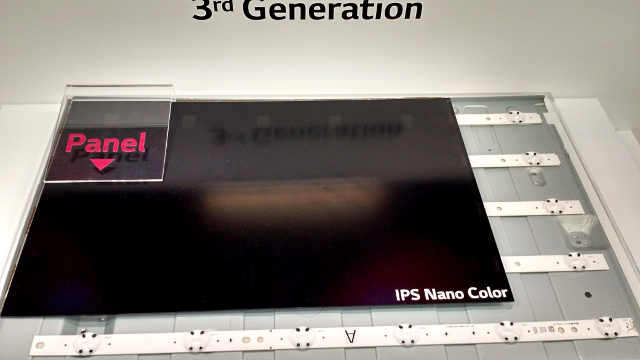LG Electronics talked a lot about their Nano Cell technology at CES 2017 and how this improves performance of their Super LCD TVs. They described Nano Cell LCD displays as having, “uniformly-sized particles measuring approximately one nanometer in diameter to create more subtle, accurate colors that can be viewed from wider angles than other LCD TVs. These particles absorb surplus light wavelengths, enhancing the purity of the colors displayed on the screen. These light absorbing capabilities allow LG’s new LCD displays to filter distinct colors with much greater precision. For example, the color green on conventional TVs can blend with other color wavelengths – such as yellow or blue – causing the color to fade and take on yellowish or cyan hues. LG Nano Cell technology dramatically reduces instances of color fading, image instability and other color degradation issues. Nano Cell technology also reduces reflectivity to maintain high picture quality even in environments with ambient lighting.”
This description tells you the benefits of the technology but it does not really describe the physics or architecture of the solution. To try to learn more, we visited the Innovation Room hosted by LG Display, which supplies the panels to LG Electronics and other TV brands.
Below is a chart that provides a little more detail on the specifics of the benefits in terms on color gamut efficiency and viewing angle performance compared to quantum dot performance. LGE apparently calls the technology “Nano Cell” while LGD calls it “Nano Color.”
The exact displays and metrology used to obtain these results was not disclosed so it is a little hard to judge the validity of these comparisons – especially since these results are likely to change if compared to Samsung’s new QLED quantum dot TVs that have higher efficiency and wide viewing angle performance than last year’s Samsung models. Nevertheless, the LCD performance is a significant improvement over last years’ models.
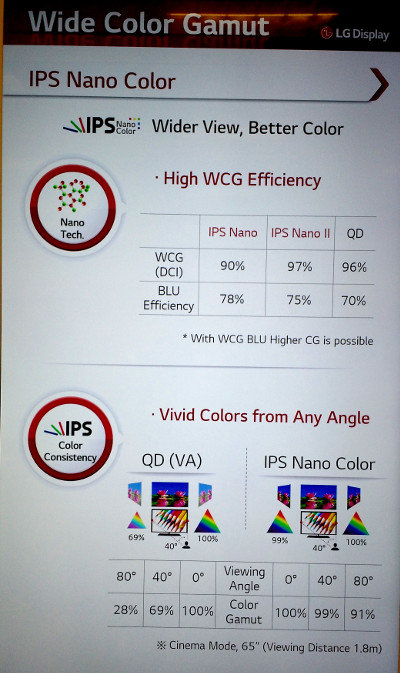
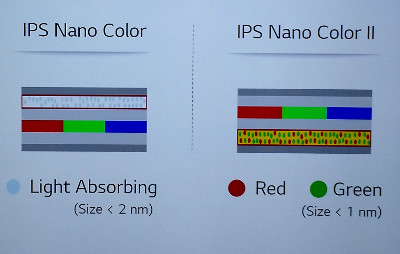
The cross section chart provides some technical insight into the Nano Color solutions. Note that there are actually two Nano Color solutions described. After consulting with numerous sources, we have a decent explanation of what is going on.
First, Nano Color I is what was shown at CES 2017 and what will show up in models that ship this spring. The chart shows light absorbing particles of less than 2 nm, but LGE was talking about particles of less than 1 nm (which was wrong and a point of confusion). These so called “particles” in Nano Color I are not particles at all but are likely to be dye molecules. These special dyes are designed to absorb light in the gap between the green and red color bands. This should help narrow the spectrum of red and green allowing a wider color gamut for the display.
But does it? According to sources who measured the color gamut of TVs on the show floor, the FWHM of the green was 61nm and the red 62nm (see data below). While this is an improvement on the FWHM without Nano Color I, it is not as good a most quantum dot solutions.
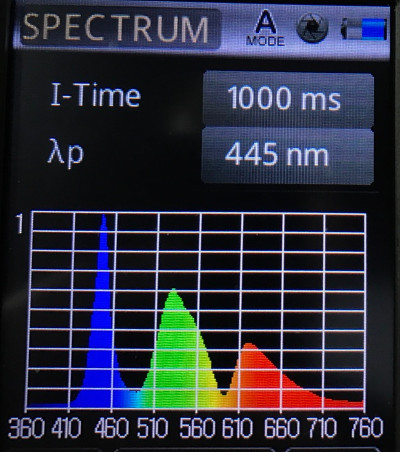
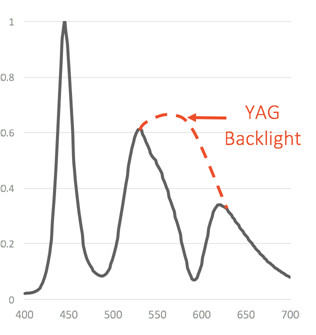
This is a very similar approach to that used by Samsung a year and half ago in their 6000 series quantum dot TVs. For this series, they developed a purple-colored sheet that had dye to absorb light in the green-red gap which they called a color gamut enhancement film. This was soon dropped as the dyes have a fairly wide absorption profile meaning they were also absorbing a lot of wanted red and green light, thus decreasing optical efficiency.
LG may be thinking the same way as they were also showing their Nano Color II profile. This was said to be coming “in the near future,” suggesting Nano Color I may be short lived – maybe even less than a model year.
But will Nano Color II be a quantum dot solution? LG Display is not saying, but by calling the technology “light accelerating” and showing red and green particles, it certainly suggests that this is the case. The only confusing part is the particle size of ‘less than 1nm’. Conventional quantum dots are in the 3-6nm range.
LG Display also showed some charts and models of several generations of wide color gamut technology. The photo for Gen. 3, which we believe is the Nano Color I concept, shows a very dark sheet while the label in the graphic describes the wide color gamut technology as “panel polarizer.” We believe this is correct and the dye has been integrated into the polarizer.
But is this in the top or bottom polarizer? Samsung’s implementation placed a separate sheet near the back polarizer at the backlight. We believe the LG implementation adds the dye to the front polarizer, even though the model suggests it is the back polarizer. This should account for the claims of reduces reflections, lower black levels and maybe wider viewing angle with this Nano Color I solution.
We will continue to ask LG about these aspects for follow up articles. – CC
